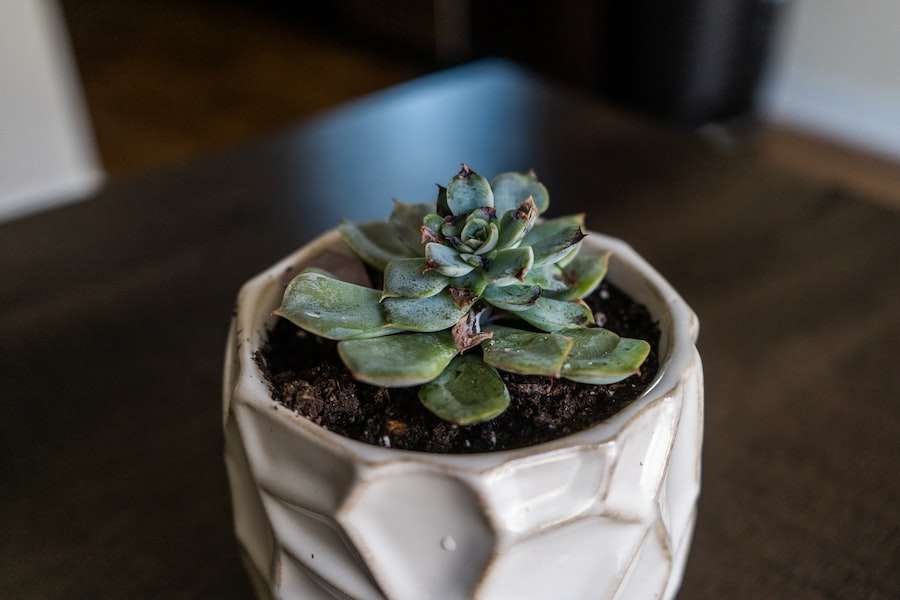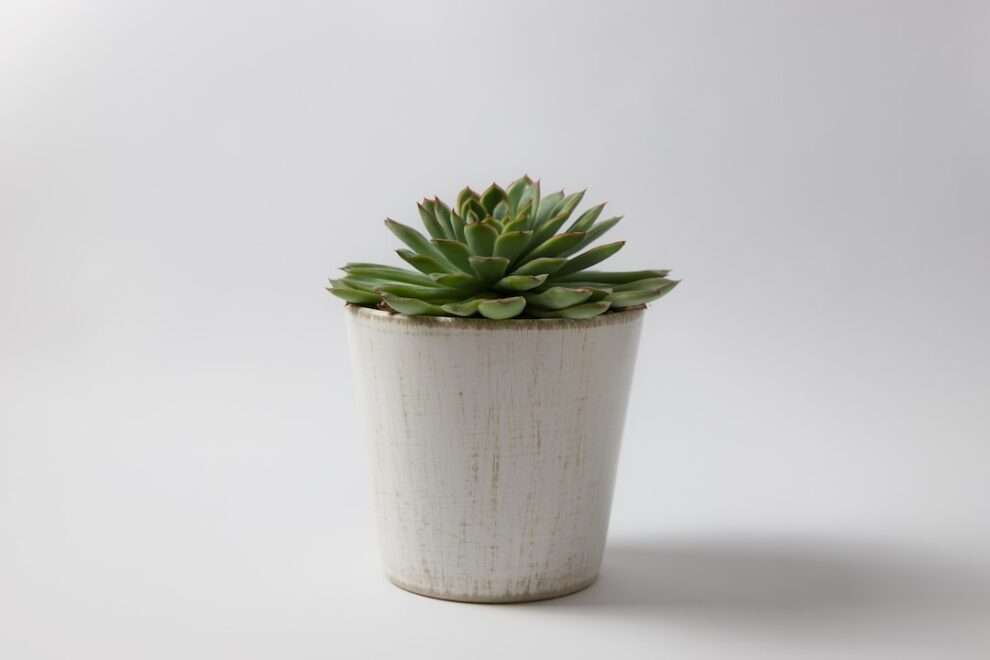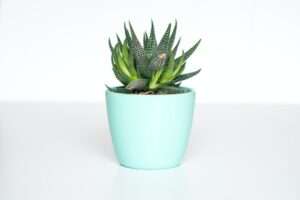Succulents have become increasingly popular in recent years, and it’s no wonder why. These unique plants are not only visually appealing, but they also require minimal care and can thrive in a variety of environments. However, one aspect of succulent care that is often overlooked is the importance of repotting. Repotting your succulents is crucial for their overall health and growth, and it’s a task that should not be neglected. In this article, we will explore the reasons why repotting is necessary, how to determine when your succulent needs repotting, and the steps involved in the repotting process.
Understanding the Importance of Repotting Succulents
Repotting is necessary for succulents for several reasons. First and foremost, succulents have a tendency to outgrow their pots over time. As they grow, their roots become cramped and can become root-bound, which can hinder their growth and overall health. Repotting allows the roots to spread out and establish themselves in a larger space, providing the plant with more room to grow.
In addition to providing more space for the roots, repotting also allows you to refresh the soil that your succulent is growing in. Over time, the soil can become depleted of nutrients and compacted, making it difficult for the plant to absorb water and nutrients effectively. By repotting your succulent, you can provide it with fresh, well-draining soil that will promote healthy growth.
Signs that Your Succulent Needs Repotting
There are several signs that indicate your succulent may need repotting. One of the most obvious signs is if your succulent has outgrown its current pot. If you notice that the roots are starting to poke out of the drainage holes or if the plant looks top-heavy and unstable in its pot, it’s time to consider repotting.
Another sign that your succulent may need repotting is if it is root-bound. Root-bound succulents have roots that have become tightly packed and are circling around the inside of the pot. This can restrict the plant’s ability to absorb water and nutrients, leading to stunted growth and overall poor health. If you notice that the roots are tightly packed and there is little to no soil visible, it’s time to repot your succulent.
Choosing the Right Pot for Your Succulent
When it comes to choosing a pot for your succulent, there are a few factors to consider. First and foremost, you want to choose a pot that has drainage holes. Succulents are prone to root rot if they sit in waterlogged soil, so it’s important to ensure that excess water can drain out of the pot.
In addition to drainage holes, you also want to choose a pot that is the right size for your succulent. The pot should be slightly larger than the current pot, allowing room for the roots to spread out. However, you don’t want to choose a pot that is too large, as this can lead to overwatering and root rot.
When it comes to materials, there are several options that are suitable for succulents. Terra cotta pots are a popular choice because they are porous and allow for good airflow to the roots. However, they can dry out quickly, so you may need to water your succulent more frequently. Ceramic pots are another option, as they come in a variety of colors and styles. They are less porous than terra cotta pots, so they retain moisture better. Finally, plastic pots are lightweight and affordable, but they don’t provide as much airflow to the roots.
Preparing the Soil Mix for Repotting Succulents
A good soil mix is essential for the health of your succulent. Succulents require well-draining soil that allows excess water to flow out of the pot. A basic succulent soil mix consists of three parts potting soil, two parts coarse sand or perlite, and one part pumice or gravel. This mixture provides good drainage while still retaining enough moisture for the succulent’s roots.
To prepare the soil mix, start by combining the potting soil, coarse sand or perlite, and pumice or gravel in a large container. Mix the ingredients together thoroughly until they are well combined. You can also add a slow-release fertilizer to the soil mix to provide your succulent with additional nutrients.
How to Remove Your Succulent from Its Current Pot

Before you can repot your succulent, you need to safely remove it from its current pot. Start by gently loosening the soil around the edges of the pot using your fingers or a small tool. Be careful not to damage the roots in the process. Once the soil is loosened, turn the pot upside down and tap it gently to release the plant.
If the succulent is stubborn and won’t come out easily, you can use a tool such as a butter knife or a trowel to carefully loosen the roots from the sides of the pot. Again, be gentle and take your time to avoid damaging the plant.
Tips for Handling Succulents During Repotting
When handling succulents during repotting, it’s important to take certain precautions to avoid damaging the plant. Succulents have delicate leaves that can easily break or bruise if mishandled. To avoid damaging the leaves, always handle the plant by its base or use a tool such as tongs or chopsticks to lift it out of the pot.
In addition to being careful with the leaves, you also want to be mindful of the roots. Avoid pulling on the roots or tearing them apart, as this can cause damage and stress to the plant. Instead, gently untangle any roots that are circling around the inside of the pot and trim off any dead or damaged roots.
How to Prune Your Succulent Before Repotting
Pruning your succulent before repotting is an important step that can help promote healthy growth. Start by removing any dead or damaged leaves from the plant. These leaves can attract pests and diseases, so it’s best to remove them before repotting.
Next, you can also prune any leggy or overgrown stems to encourage a more compact and bushy growth habit. Use a clean pair of pruning shears or scissors to make clean cuts just above a leaf node. This will stimulate new growth and help your succulent maintain its shape.
Transplanting Your Succulent into Its New Pot
Once you have prepared the soil mix, removed your succulent from its current pot, and pruned it if necessary, you are ready to transplant it into its new pot. Start by placing a layer of the soil mix in the bottom of the pot. This will provide a cushion for the roots and help prevent them from sitting in water.
Next, carefully place your succulent in the center of the pot, making sure that the roots are spread out evenly. Add more soil mix around the sides of the plant, gently pressing it down to secure the plant in place. Be careful not to bury the succulent too deeply, as this can lead to rotting.
Once the succulent is securely planted, give it a gentle watering to settle the soil and remove any air pockets. Allow the soil to dry out completely before watering again.
Watering and Caring for Your Repotted Succulent
After repotting your succulent, it’s important to adjust your watering routine to accommodate its new pot and soil mix. Succulents prefer to be watered deeply but infrequently, allowing the soil to dry out completely between waterings. This helps prevent overwatering and root rot.
To water your succulent, thoroughly saturate the soil until water drains out of the bottom of the pot. Allow the excess water to drain away completely before placing the pot back in its saucer or decorative container. Avoid letting the pot sit in standing water, as this can lead to root rot.
In addition to proper watering, your repotted succulent will also benefit from regular fertilization. Use a balanced, water-soluble fertilizer diluted to half strength and apply it every two to four weeks during the growing season. This will provide your succulent with the nutrients it needs to thrive.
Common Mistakes to Avoid When Repotting Succulents
While repotting succulents is a relatively simple task, there are some common mistakes that people make that can hinder the success of the process. One common mistake is choosing a pot that is too large for the succulent. While it may seem like a larger pot would provide more room for growth, it can actually lead to overwatering and root rot. Choose a pot that is slightly larger than the current pot, allowing room for the roots to spread out.
Another common mistake is using the wrong type of soil mix. Succulents require well-draining soil that allows excess water to flow out of the pot. Using regular potting soil or soil mixes that retain too much moisture can lead to root rot and other issues. Be sure to use a soil mix specifically formulated for succulents or create your own using a combination of potting soil, sand or perlite, and pumice or gravel.
Repotting your succulents is an important task that should not be overlooked. It provides your plants with more room to grow, refreshes the soil, and promotes healthy growth. By understanding the signs that your succulent needs repotting, choosing the right pot and soil mix, and following the proper steps for repotting, you can ensure the success of the process and keep your succulents thriving for years to come. So don’t neglect this important aspect of succulent care and give your plants the space they need to flourish.
If you’re a succulent lover, you know how important it is to take care of your plants. One common concern for succulent owners is how to protect their plants from extreme cold temperatures. In a related article on GirlsGist, “Surviving the Chill: How to Protect Your Succulents from Extreme Cold – Understanding the Threshold Temperature for Succulent Survival,” you can find helpful tips and information on how to keep your succulents thriving during cold weather. From understanding the threshold temperature for succulent survival to implementing effective strategies, this article has got you covered. So, if you want to ensure the health and well-being of your succulents, check out this informative article here.
FAQs
What is repotting succulents?
Repotting succulents is the process of transferring a succulent plant from its current pot to a new one. This is done to provide the plant with more space to grow, fresh soil, and better drainage.
When should I repot my succulents?
Succulents should be repotted when they outgrow their current pot or when the soil becomes compacted and doesn’t drain well. This is usually every 1-2 years.
What kind of soil should I use when repotting succulents?
Succulents require well-draining soil that is specifically formulated for cacti and succulents. This type of soil is usually a mix of sand, perlite, and peat moss.
What kind of pot should I use when repotting succulents?
Succulents should be planted in pots that have drainage holes to prevent water from accumulating in the soil. Terra cotta pots are a good choice because they are porous and allow for air circulation.
How do I repot my succulents?
To repot a succulent, gently remove it from its current pot and shake off any excess soil. Place the plant in the new pot and fill in the gaps with fresh soil. Water the plant lightly and allow it to settle in its new home.
What should I do after repotting my succulents?
After repotting, it’s important to give your succulent time to adjust to its new environment. Avoid watering it for a few days to allow the roots to settle in. Place the plant in a bright, sunny spot and monitor it for any signs of stress or disease.

















Add Comment